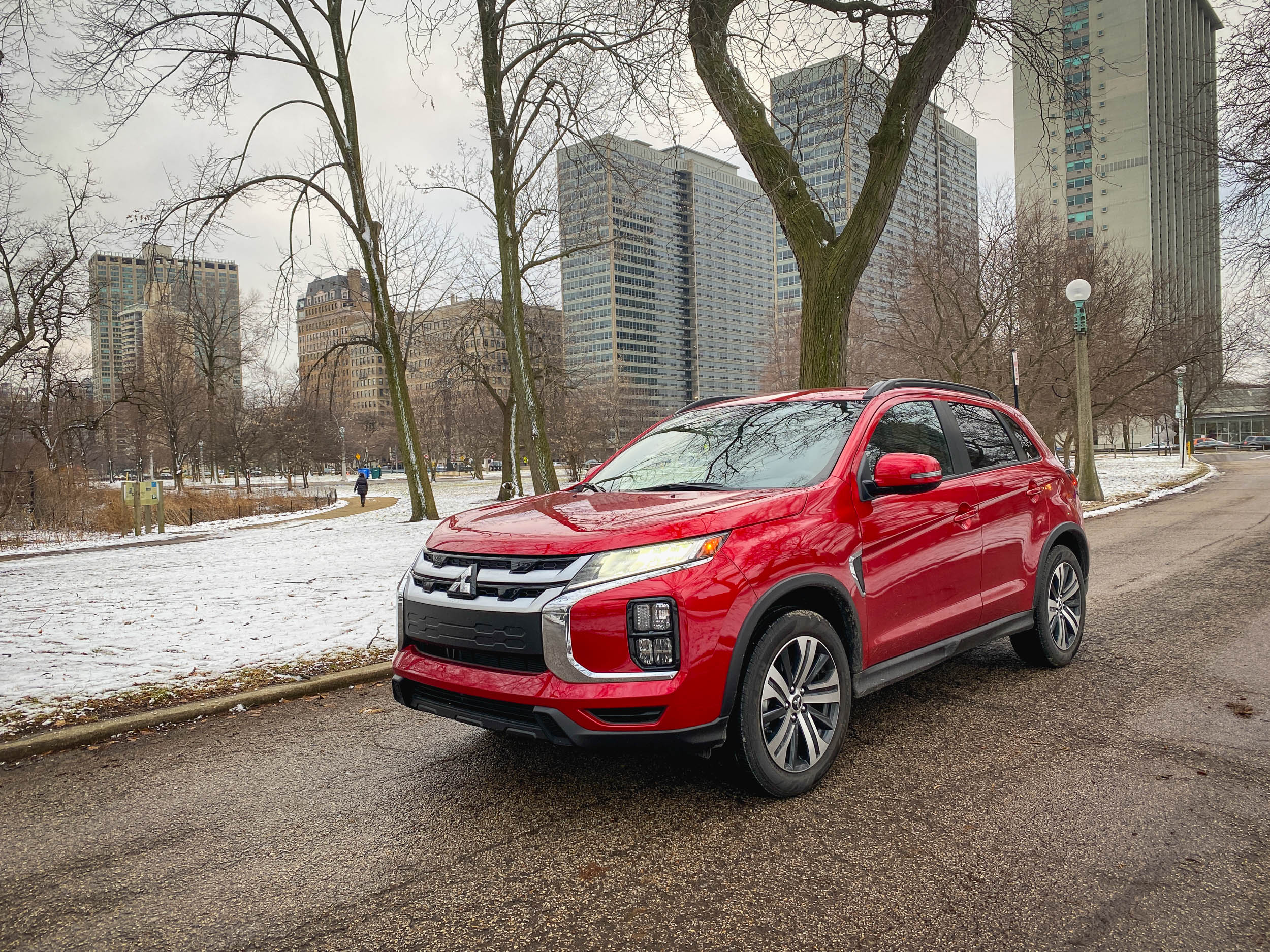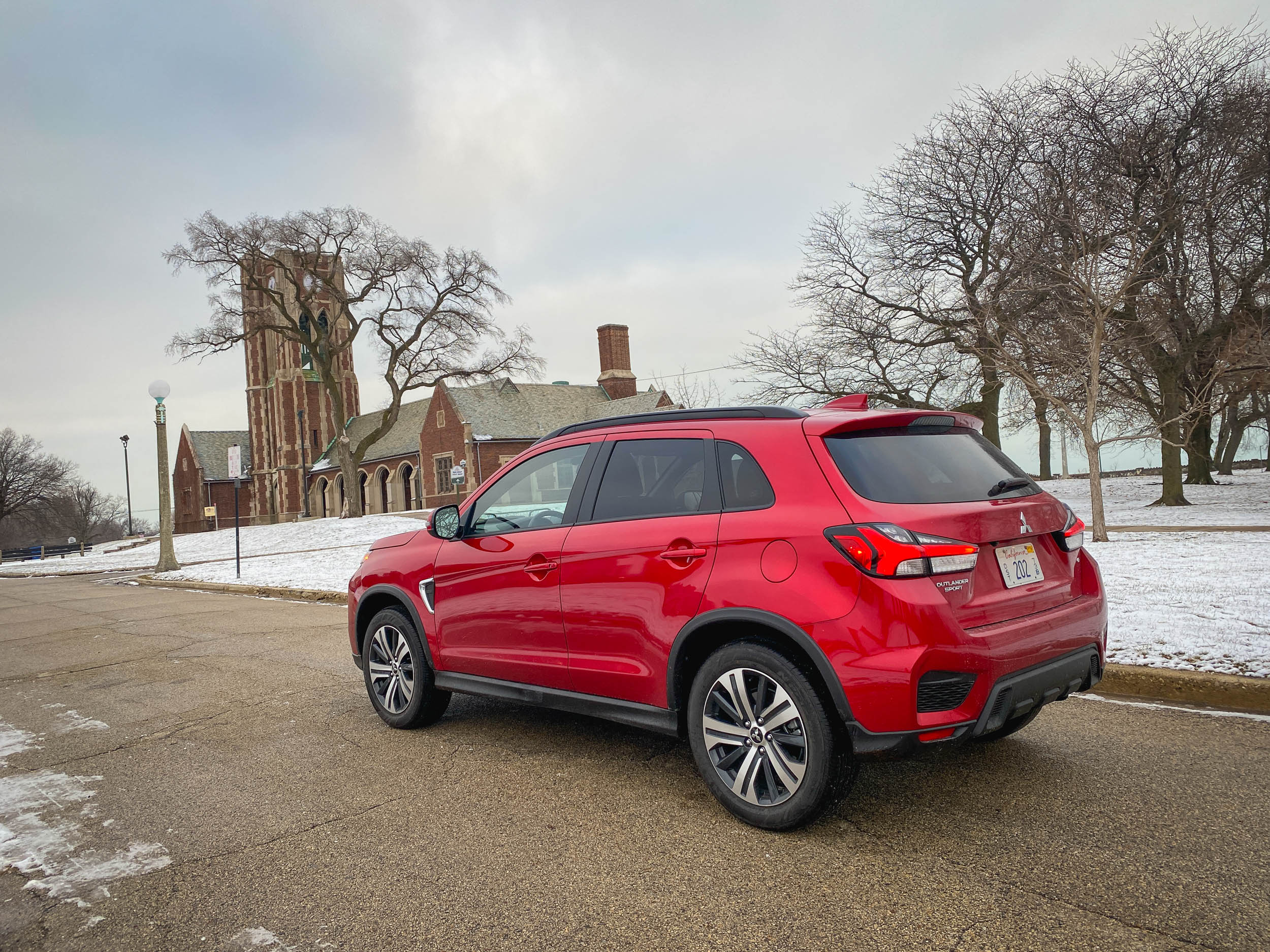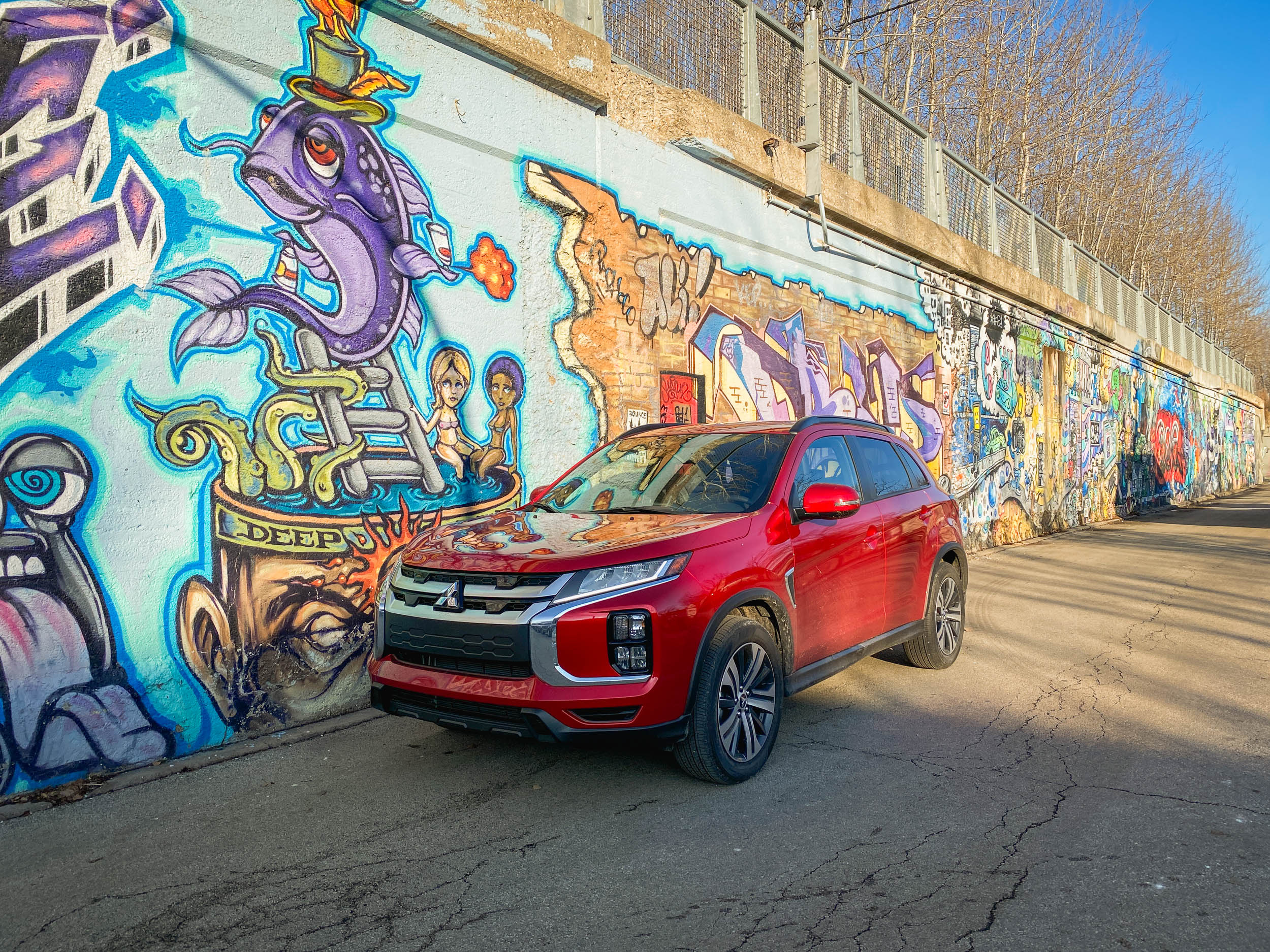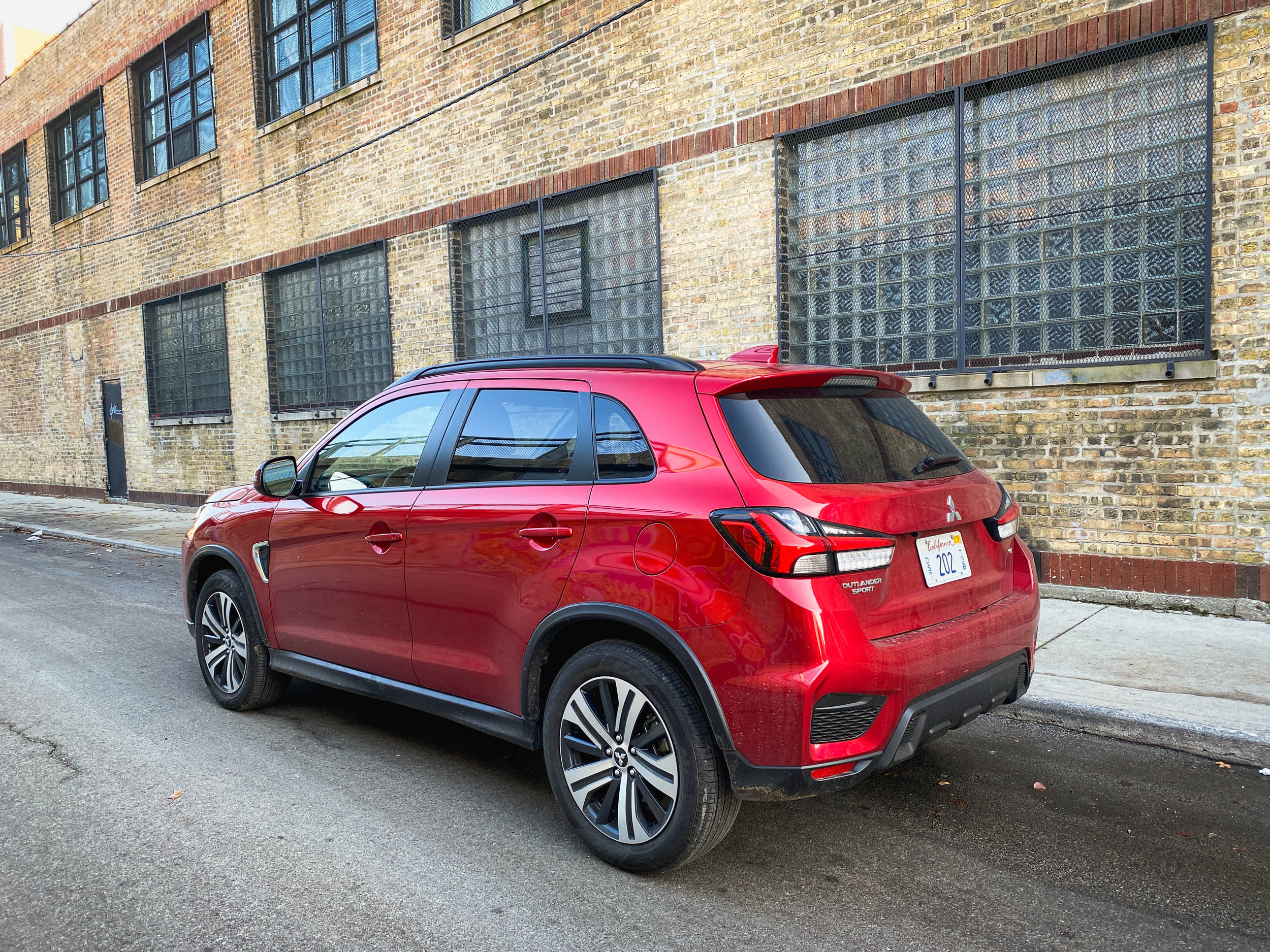2020 Mitsubishi Outlander Sport: Struggling to keep up with the Joneses

Words and Photos by Jill Ciminillo
Once upon a time, I really liked the Mitsubishi Outlander Sport. I thought it was well-priced and offered a lot to someone who wanted to buy new but couldn’t afford most new-car prices.
With that being said, I was a tiny bit disappointed with the refreshed 2020 model. It’s not that it’s a bad vehicle. I just expected more from a vehicle that costs $29K. And I didn’t get it.
THE GOOD STUFF
Let’s back up a minute, and talk about what Mitsubishi did right.
The exterior styling is a huge win. The bolder grille and standard LED headlights, taillights and daytime running lights are attractively styled, making the exterior of this compact SUV shine. The strong horizontal lines along the side and the silver swoosh above the front wheel well add visual interest and help tie together the chrome on the front grille and the silver garnish on the rear.
I also really like that the plastic cladding isn’t gregarious surrounding the bottom of the vehicle.
Plus, our test vehicle was wrapped in new Red Diamond paint that really popped. Especially against a wintery backdrop.
The overall effect from the outside is a handsome vehicle.
ENGINE POWER
Another point in the Outlander Sport’s favor is the engine. There are two options when it comes to power. The base engine is a 2.0-liter, 4-cylinder with variable valve timing that pushes out 148 horsepower at 6,000 RPM. Torque is an almost even match at 145 pound-feet. Our tester had the more powerful 2.4-liter, 4-cylinder that pumps out 148 horsepower and 145 pound-feet of torque.
This was a nice amount of power for a vehicle of this size. Namely, this is a vehicle I don’t think will get me killed when I’m trying to turn into traffic off of a side street. The Outlander Sport is quick off the line and does a nice job merging with traffic and onto the highway.
Additionally, I had the pleasure of a winter storm rolling through during my time with the Outlander Sport, but the little Mitsubishi that could managed to traverse the unplowed, unsalted alleys with ease.
A tick in the negative column: Engine whine is noticeable under hard acceleration, and road noise is definitely prevalent.
INTERIOR ICK
Now let’s take a look inside as this is where the real kinks come out.
I mean, it’s like 1990 called and wanted its interior back.
You can tell Mitsubishi spent the bulk of its refresh dollars on the exterior as the interior of the Outlander Sport is severely dated. The analog behind-the-wheel gauges don’t bother me, but the tiny screen between the speedo and tach with its old-school Atari-style graphics does.
While I appreciated the available 8-inch touchscreen infotainment display for its size, the execution of graphics looked like something out of “War Games.”
I kept waiting for the vehicle to ask me if I’d like to play a game.
Then there’s the angle of the screen on the center stack itself, which poses a problem in sunlight. The reflection off the screen was glaring, and if you were hoping to use the backup camera to make sure you didn’t hit anything — no dice.
I also wasn’t a fan of the surface materials in the Mitsubishi Outlander Sport.
I was driving the top-tier GT trim with all-wheel control (Mitsubishi’s version of all-wheel drive), and while I liked the seating surfaces with their ultra suede inserts, everything else felt plasticky.
From the dash to the leather-wrapped steering wheel, the tactile feel was sub par.
Apple CarPlay and Android Auto aren’t even standard on the base trim. They are included one level up on the SP ($24,645) trim along with the 8-inch touchscreen display.
COMPETITVE SET
Mitsubishi does a lot of its competitive comparisons on the SE trim, which is two levels up from base and costs a little more than $25K.
Mitsubishi uses the following vehicles as a comparison: Hyundai Kona Limited ($27,500), Honda HR-V EX-L ($28,190) and the Chevrolet Trax LT ($25,695). But there are two new players in the ring that are conveniently absent: Hyundai Venue ($23,170) and Nissan Kicks ($22,215) — both of which have a bevy of standard safety features and a price point under $20K.
They also top out at less than the price of the SE trim of the Outlander Sport.
Besides, what I want to see is a base-to-base comparison.
What’s missing: standard safety technology. Hyundai, Honda and Nissan all have it. The Kicks even has standard automatic reverse braking.
So, the lack of standard safety tech is the biggest miss in my book.
The Outlander Sport does have leg up on the competition in one area – it offers all-wheel-drive. The Venue and Kicks do not.
DISAPPOINTING CONCLUSIONS
Before automakers started including standard safety tech in their lowest-trim vehicles, Mitsubishi was competitive in terms of pricing and amenities.
It didn’t matter if the interior trappings were a bit out-of-date because this little CUV fit well in an urban space, had nice engine output and was handsomely styled.
But as soon as economy-class SUVs such as the Hyundai Venue and Nissan Kicks started offering standard safety tech under $20K, all bets were off.
To stay competitive in this growing demographic, Mitsubishi either needs to get with the safety game or knock about $2K off of its base price.






























